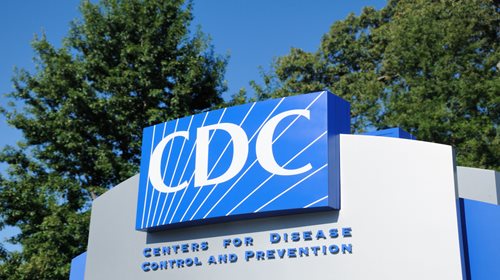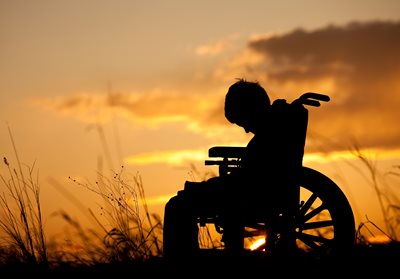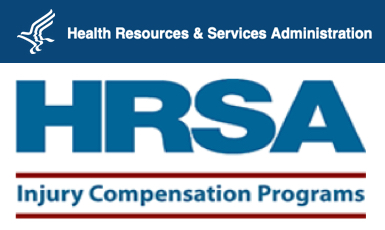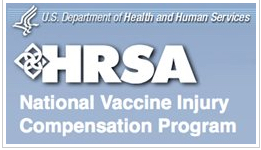
Story Summary
- Addition of COVID-19 vaccines will trigger state vaccine mandate legislation efforts;
- Government appears to be getting legal advice on adding COVID-19 vaccines to federal Vaccine Injury Compensation Program (VICP);
- Adding COVID-19 vaccines to the VICP could result in the injured being grouped into an omnibus proceeding and limit compensation;
- Over time DHHS has added few injuries to the VICP's injury table, making the VICP highly adversarial;
- The original intent of VICP to be a no-fault compensation program has been lost and history is not on the side of the vaccine injured.
The Centers for Disease Control and Prevention’s (CDC) Advisory Committee for Immunization Practices (ACIP) met October 19-20, 2022. During the meeting, the CDC’s Director of the National Center for Immunization and Respiratory Diseases (NCIRD), Dr. José Romero, stated that no policy change was being undertaken where COVID-19 vaccines were concerned and clarified that the purpose of the scheduled Vaccines for Children (VFC) vote was in preparation for the commercialization of COVID-19 vaccines. He added that the timeline for “commercialization” was unknown.1
Despite Dr. Romero’s assurances of no policy change, the ACIP voted the next day to add COVID-19 vaccines to the 2023 childhood and adult schedules. Before the vote, one ACIP member asked if adding vaccines with an emergency use authorization (EUA) status to the federally recommended schedules was allowed. In response, Dr. Patricia Wodi, of the CDC/NCIRD, stated that CDC sought guidance from the U.S. Office of General Counsel (OGC) on that very question and that the OGC had advised that EUA COVID-19 vaccines could be added to the schedules.2
The addition of these vaccines to the federally recommended schedule have implications for vaccine injury compensation and mandates.
Federal Vaccine Recommendations Trigger Vaccine Mandate Efforts
 It’s no surprise that COVID-19 vaccines have been added to the CDC’s recommended vaccination schedule for children. It has always been a question of when and how it would happen. Now that the when and how have been revealed, the ACIP’s actions leading up to these additions were clearly misleading and deceptive and are unlikely to inspire trust with members of the public, who continue to voice concerns about the safety and necessity of COVID-19 vaccinations for children. NVIC submitted a written public comment opposing the addition of COVID-19 vaccine to the CDC’s childhood vaccination schedule.3
It’s no surprise that COVID-19 vaccines have been added to the CDC’s recommended vaccination schedule for children. It has always been a question of when and how it would happen. Now that the when and how have been revealed, the ACIP’s actions leading up to these additions were clearly misleading and deceptive and are unlikely to inspire trust with members of the public, who continue to voice concerns about the safety and necessity of COVID-19 vaccinations for children. NVIC submitted a written public comment opposing the addition of COVID-19 vaccine to the CDC’s childhood vaccination schedule.3
Notably, ACIP recommendations are not official until the CDC Director has approved them and they are published in CDC’s Morbidity and Mortality Weekly Report (MMWR).4
The reality of federal vaccine recommendations is that they are often viewed by one-size-fits-all legislators, lobbyists, policymakers, and advocates as a green light for launching aggressive efforts to mandate federally recommended vaccines at a state level and restrict vaccine exemptions.
Implications for the COVID-19 Vaccine Injured
The addition of COVID-19 vaccines to the CDC’s recommended childhood vaccination schedule may also signal the beginning of a federal effort to include these vaccines in the federal vaccine injury compensation program’s (VICP) vaccine injury table (VIT). Since a US Supreme Court ruling in 2011, manufacturers of vaccines covered by the VICP essentially have a total liability shield from civil vaccine injury lawsuits.5 6 7
Currently, all manufacturers of COVID-19 vaccines have been granted an EUA to distribute the vaccines and be exempt from liability for vaccine injuries and deaths.8 However, injury compensation for EUA vaccines is obtained through application to a separate Countermeasures Injury Compensation Program (CICP) rather than the VICP.9 10 11 12
In August 2021, NVIC corresponded with the U.S. Department of Health Resources & Services Administration (HRSA) about COVID-19 vaccine inclusion in the VICP. HRSA administers both the VICP and the CICP and responded with the criteria that must be met for VICP inclusion.
“As noted, the COVID-19 vaccines currently authorized through Food and Drug Administration (FDA) Emergency Use Authorizations or approved by the FDA are covered countermeasures under the Public Readiness and Emergency Preparedness Act and, therefore, individuals who allege injury as a result of the administration or use of such vaccines are eligible to apply for benefits under the CICP. Full FDA approval of the Pfizer COVID-19 vaccine does not remove its coverage from the CICP or provide coverage under the VICP. In order to add a new vaccine to the VICP, the following actions must occur: (1) the vaccine must be recommended by the Centers for Disease Control and Prevention (CDC) for routine administration to children and/or pregnant women; (2) Congress must enact an excise tax on the vaccine; and (3) the U.S. Department of Health and Human Services (HHS) must add the vaccine to the Vaccine Injury Table through publication of a notice of coverage in the Federal Register.”13
When asked about the possibility of an EUA vaccine being shifted from the CICP to the VICP while a public health emergency under the Public Readiness and Emergency Preparedness (PREP) Act remained in effect, HRSA officials stated:
“The question you ask seeks a legal opinion regarding a speculative future event. Our office is not able to provide such legal advice.”14
Since this 2021 exchange with HRSA, it appears that agencies under the U.S. Department of Health and Human Services (DHHS), namely the CDC and the U.S. Health Resources and Services Administration (HRSA), are getting legal advice from the OGC in a probable attempt to create a liability-free pathway for COVID-19 vaccines from the CICP to the VICP. Step one of that pathway, as outlined by HRSA in the above statement, will soon be realized. Upon completion of these steps, a U.S. public health emergency would no longer be necessary to secure the continued liability-free status of COVID-19 vaccines.
Potential Compensation Outcomes for the COVID-19 Vaccine Injured
 As of October 1, 2022, the CICP reported receiving more than 10,000 alleged injury claims related to COVID-19, and over 7,000 of these were related to COVID-19 vaccines.15 Congressional concern relating to COVID-19 vaccine side-effects and injury compensation,16 may stimulate introducing and passing the excise tax legislation (step two) that is required for COVID-19 vaccines to be included in the VICP.
As of October 1, 2022, the CICP reported receiving more than 10,000 alleged injury claims related to COVID-19, and over 7,000 of these were related to COVID-19 vaccines.15 Congressional concern relating to COVID-19 vaccine side-effects and injury compensation,16 may stimulate introducing and passing the excise tax legislation (step two) that is required for COVID-19 vaccines to be included in the VICP.
In theory, the VICP could help those injured by COVID-19 vaccines to secure legal counsel and medical experts without the financial burden associated with the CICP claims process. It could also help the injured have a better chance of obtaining compensation because the CICP has made very few awards and the VICP is designed to be more generous.
However, the million-dollar question that remains is, WILL the COVID-19 vaccine injured receive just compensation from the VICP? The answer to that question requires an understanding of VICP history.
Congressional and DHHS Actions Undercut Spirit of No-Fault Compensation Program
In November 1986, Congress passed the National Childhood Vaccine Injury Act to institute vaccine safety informing, recording, reporting, and research reforms in the mass vaccination system and to provide a less adversarial administrative federal compensation program alternative to a vaccine injury lawsuit in federal court. The original law continued to hold vaccine manufacturers liable in civil court for design defect (failure to make a safer vaccine), and doctors continued to be held liable for medical malpractice in administering vaccines.
In 1993, Congress amended the 1986 Act by giving DHHS more control over the VIT, which lists compensable vaccine injuries and symptoms of vaccine reactions.17 After DHHS was given more control over what can be considered a vaccine reaction symptom and compensable vaccine injury, changes to the VIT have been largely accomplished through a rubber-stamped rule-making process.18 19
Prior to DHHS taking control of the VIT, 74 percent of vaccine injury claims were awarded federal compensation via the VICP because there were acknowledged vaccine-related injuries listed on the VIT. These acknowledged injuries allowed the VICP to operate within the spirit of the law as a no-fault administrative compensation program that made injury awards expeditiously based on a robust VIT. These types of claims and awards are often referred to as “on-the-table,” as they are linked to acknowledged injuries appearing on the VIT.20 21 22

Over time, some of the long-recognized vaccine-associated injuries have either been removed, or their definitions have been narrowed by DHHS rule making to such a degree that vaccine injury compensation through the VICP is highly unlikely for most petitioners applying for federal compensation.23 24 25 A 2014 U.S. Government Accountability Office (GAO) report also noted that DHHS had added vaccines to the injury table without the addition of any associated vaccine reaction symptoms or compensable injuries.26
By 2018, the impact of DHHS changes to the VIT had resulted in 98 percent of VICP vaccine injury claims being adjudicated in the U.S. Court of Federal Claims as off-table cases, with DHHS and the Department of Justice fighting against awarding compensation for almost all claims. This means that the VICP has become highly adversarial because it is no longer an administrative procedure. Instead, petitioners and their attorneys must go to extra lengths to prove the injury is vaccine-related, similar to the proof required in a civil vaccine injury lawsuit, to receive federal compensation as no corresponding injury has been added to the VIT.27 28 29 30
Published analyses by the GAO reported the effects of DHHS actions on the VIT as early as 1999 and raised concern regarding DHHS changes:
“far more claims have historically been associated with injuries HHS removed from the table than with injuries HHS added to it. For example, about half of the awards made since the program’s inception have been for neurological injuries that HHS later removed from the table in 1995 and 1997. Removing these injuries shifts the burden of proof to the petitioner, making it more difficult to qualify for compensation under VICP.”31
Once again in 2014, 15 years after the GAO report raised red flags, the DHHS again narrowed vaccine injury definitions contained in the VIT for the purpose of making it easier to deny petitioners compensation.32 33
The VICP’s history has implications for how the COVID-19 vaccine-injured will fare in the VICP. Because of the 1993 amendment, the inclusion of COVID-19 vaccines in the VICP (step three) will be accomplished through the rule-making process used by DHHS, which will take approximately nine months to complete once initiated.34 There are no real mechanisms to check the absolute power of DHHS in this regard.
Given DHHS’ history and past rulemaking, the addition of COVID-19 vaccine injuries to the VIT, if any, are likely to be very few in number and very narrowly defined. If true, the adversarial nature of the VICP created by DHHS will continue and will result in fewer COVID-19 vaccine injury compensation awards.35 36 37
COVID-19 Vaccine Injured May Face Omnibus Proceedings
 Once COVID-19 vaccine injury compensation comes under the VICP, there is also the potential for COVID-19 vaccine injury cases to be grouped into an omnibus proceeding.
Once COVID-19 vaccine injury compensation comes under the VICP, there is also the potential for COVID-19 vaccine injury cases to be grouped into an omnibus proceeding.
As described in a 2014 GAO report, the Office of Special Masters developed the omnibus process in 1999 based on the idea - similar to a class action lawsuit - that a group of claims may center around the same evidence for an alleged injury. In theory, omnibus proceedings allow for the resolution of a large number of injury claims by selecting a test case and determining whether the injury causation theories justify an award or a denial of compensation. The test case compensation decision is then applied to the other associated cases grouped together under the test case.38 This theory, of course, requires that all plaintiffs are the same, their injuries are the same, and the cause of their injuries is the same.
The largest omnibus proceeding to date grouped over 5,000 children with vaccine-related autism who had filed claims in the VICP. In 2011, the Omnibus Autism Proceeding concluded with no compensation being awarded to the test cases or the 5,000 children grouped together. Additionally, the Special Master's omnibus conclusion also meant that any future vaccine injury claim with autism listed as an injury would be unlikely to be considered by the VICP and that vaccine injury attorneys would also be unlikely to accept such a case. Before the Omnibus Autism Proceeding, there were two other proceedings noted by the GAO. One involved hundreds of cases for alleged injuries involving the hepatitis B vaccine, and another smaller proceeding involved fewer than 50 cases alleging various vaccines caused type 1 diabetes.39
History is Against Just Compensation of COVID-19 Vaccine Injured
Time will tell what compensation fate awaits the COVID-19 vaccine injured and what, if any, vaccine injuries will be added by DHHS to the VIT for COVID-19 vaccines.
History, however, is not on the side of the vaccine injured. The 1986 Act’s mandate that ongoing vaccine safety research be conducted to create a robust VIT to inform the Court and expedite just federal compensation awards to the vaccine injured40 has not been conducted. Additionally, other vaccine safety provisions have been severely weakened by amendments passed by Congress at the request of federal officials.41

In short, the VICP is broken and has been for some time. It will require more than the shifting of compensation from the CICP to the VICP to provide just compensation to the COVID-19 vaccine injured.
The Vaccine Landscape and Action Needed
Federal recommendations by the ACIP should not equate to state mandates and putting a noose around the neck of the human right of bodily autonomy, and civil rights and liberties. No one should have to choose between vaccination or being employed, accessing a school for education, and freely moving about in society. Yet during this pandemic and before, these are exactly the choices foisted upon society by public health officials and legislatures.
This battle has never been about being pro or anti-vaccine. It has only ever been about the ability to decide what risk each of us is willing to take when we decide whether or not to vaccinate, and being able to exercise the human right to bodily autonomy and informed consent without sanction.
NVIC knew the battle to make voluntary vaccine choices without penalty and coercion would be fought in the states because most public health laws in the U.S. are state laws. In 2010 we launched NVIC’s free Advocacy Portal to create an educated, grassroots advocacy movement to protect the human right to make voluntary vaccine choices.
NVIC’s online Advocacy Portal is a free public resource and provides contact information for both state and federal officials that makes it easy for you to contact your elected officials with your concerns about proposed vaccine legislation to effect positive change. The portal posts new vaccine-related legislation introduced in the states, position statements, provides bill analysis, talking points, information on action needed and legislative history for grassroots advocates to use as they work with legislators to ensure that informed consent protections extend to vaccine laws and policies. NVIC also continues to assist legislators in drafting sound legislation protecting your rights.
NVIC has also updated our fully referenced Reforming Vaccine Policy & Law Guide, which is an excellent educational resource for vaccine choice advocates and lawmakers.
Despite recent events, the best course of action remains to establish a dialogue with your elected officials and policy-makers to protect your rights. There is hope. The public is pushing back and this year was a record-breaking year for positive legislation introduced at the state level to protect vaccine-informed consent rights.
Register today for NVIC’s free Advocacy Portal and become an educated advocate and agent for change. Educate and make your concerns known to your elected officials. Ask your legislator to reach out to NVIC to assist with the drafting of vaccine-related legislation protecting your rights. Provide our information to family and friends so that they too may act.
Don’t wait for someone else to protect your rights – that someone is you.
References:
1 Santoli J. Discussion of ACIP Presentation - VFW Resolution: Vaccines to Prevent COVID-19. Centers for Disease Control and Prevention Oct. 19, 2022.
2 Wodi PA. Discussion of ACIP Presentation - 2023 Child and Adolescent Immunization Schedule. Centers for Disease Control and Prevention Oct. 20, 2022.
3 Fisher BL. NVIC Written Public Comment to the ACIP Opposing the Addition of COVID-19 to the Federal Vaccination Schedule. National Vaccine Information Center Oct. 19, 2022.
4 U.S. Centers for Disease Control and Prevention. Where Can I Find ACIP’s Vaccine Recommendations? In: Advisory Committee on Immunization Practices. Accessed: Nov. 6, 2022.
5 SCOTUSblog. Bruesewitz v. Wyeth. 2011.
6 NVIC Cites "Betrayal" of Consumers by U.S. Supreme Court Decision Giving Total Liability Shield to Big Pharma. National Vaccine Information Center Feb. 25, 2011.
7 NVIC Position Statement - National Childhood Vaccine Injury Act of 1986. National Vaccine Information Center Feb. 18, 2018.
8 U.S. Department of Health & Human Services. PREP Act Immunity from Liability for COVID-19 Vaccinators. In: Public Health Emergency. Apr. 13, 2021.
9 U.S. Food & Drug Administration. COVID-19 Vaccines Authorized for Emergency Use or FDA-Approved. In: COVID-19 Vaccines. Accessed: Nov. 8, 2022.
10 U.S. Department of Health & Human Services. Tenth Amendment to Declaration Under the Public Readiness and Emergency Preparedness Act for Medical Countermeasures Against COVID-19. National Archives Federal Register Jan. 7, 2022.
11 U.S. Department of Health & Human Services. PREP Act Immunity from Liability for COVID-19 Vaccinators. In: Public Health Emergency. Apr. 13, 2021.
12 U.S. Health Resources & Services Administration. Countermeasures Injury Compensation Program (CICP). November 2020.
13 U.S. Health Resources & Services Administration. Email Correspondence - EUA Vaccines and VICP. National Vaccine Information Center Aug. 24-30, 2021.
14 U.S. Health Resources & Services Administration. Email Correspondence - EUA Vaccines and VICP. National Vaccine Information Center Aug. 24-30, 2021.
15 U.S. Health Resources & Services Administration. Table 1. Alleged COVID-19 Countermeasure Claims Filed as of October 1, 2022. In: Countermeasures Injury Compensation Program (CICP) Data Aggregate Data as of October 1, 2022. Accessed: Nov. 7, 2022.
16 Investigating the federal government's failed response to Covid-19 and demanding transparency and accountability through congressional oversight. In: COVID-19. Ron Johnson U.S. Senator for Wisconsin Accessed: Nov. 7, 2022.
17 Office of the Law Revision Counsel. U.S. Code - 42 USC 300aa-14: Vaccine Injury Table – Original and amended. Accessed: Nov. 7, 2022.
18 U.S. Department of Health & Human Services. National Vaccine Injury Compensation Program: Revisions to the Vaccine Injury Table. Federal Register Jan. 19, 2017.
19 Office of the Law Revision Counsel U.S. Code - 42 USC 300aa-14: Vaccine Injury Table – Original and amended. Accessed: Nov. 7, 2022.
20 Engstrom NF. A Dose of Reality for Specialized Courts: Lessons from the VICP. University of Pennsylvania Law Review 2015; Vol. 163: 1631, pg 1702.
21 Holland MS. Liability for Vaccine Injury: The United States, the European Union, and the Developing World. Emory Law Journal 2018; Vol 67 pg 429.
22 U.S. Government Accountability Office. Vaccine Injury Compensation: Program Challenged to Settle Claims Quickly and Easily. In: Reports & Testimonies. Dec. 22, 1999.
23 U.S. Government Accountability Office. Vaccine Injury Compensation: Program Challenged to Settle Claims Quickly and Easily. In: Reports & Testimonies. Dec. 22, 1999.
24 Fisher BL, Wrangham TK. NVIC Written Public Comment to the Advisory Commission for Childhood Vaccines - Request for ACCV to reconsider encephalopathy definition recommendation relating to the Vaccine Injury Table. National Vaccine Information Center Aug. 27, 2014.
25 U.S. Department of Health & Human Services. National Vaccine Injury Compensation Program: Revisions to the Vaccine Injury Table. Federal Register Jan. 19, 2017.
26 U.S. Government Accountability Office. Vaccine Injury Compensation: Most Claims Took Multiple Years and Many Were Settled through Negotiation. In: Reports & Testimonies. Nov. 21, 2014.
27 U.S. Government Accountability Office. Vaccine Injury Compensation: Most Claims Took Multiple Years and Many Were Settled through Negotiation. In: Reports & Testimonies. Nov. 21, 2014.
28 National Vaccine Information Center. IOM Publications Related to Vaccine Safety. In: Institute of Medicine Reports.
29 Fisher BL, Williams K, Wrangham TK, Hendler C. NVIC Written Opposition to the Advisory Commission on Childhood Vaccines regarding the Removal of SIRVA and Syncope from the Vaccine Injury Table. National Vaccine Information Center Apr. 16, 2020.
30 Wrangham TK. NVIC Presentation to the ACCV - Consumer Perspective on DHHS Proposed Removal of Syncope and SIRVA from the Vaccine Injury Table. National Vaccine Information Center Dec. 3, 2020.
31 U.S. Government Accountability Office. Vaccine Injury Compensation: Program Challenged to Settle Claims Quickly and Easily. In: Reports & Testimonies. Dec. 22, 1999.
32 Fisher BL, Wrangham TK. NVIC Written Public Comment to the Advisory Commission for Childhood Vaccines - Request for ACCV to reconsider encephalopathy definition recommendation relating to the Vaccine Injury Table. National Vaccine Information Center Aug. 27, 2014.
33 U.S. Department of Health & Human Services. National Vaccine Injury Compensation Program: Revisions to the Vaccine Injury Table. Federal Register Jan. 19, 2017.
34 Office of the Law Revision Counsel U.S. Code - 42 USC 300aa-14: Vaccine Injury Table – Original and amended. Accessed: Nov. 7, 2022.
35 Fisher BL. Shalala Takes Away Compensation For Dpt Injured Children. National Vaccine Information Center March 1995.
36 Fisher BL. Vaccine Injury Compensation: Government’s Broken Social Contract with Parents. National Vaccine Information Center March 1995. Nov. 2, 2015.
37 Fisher FL. NVIC Statement House Subcommittee on Criminal Justice, Drug Policy and Health Resources NVIC Statement House Subcommittee on Criminal Justice, Drug Policy and Health Resources Compensating Vaccine Injuries: Are Reforms Needed?. National Vaccine Information Center Sept. 28, 1999.
38 U.S. Government Accountability Office. Vaccine Injury Compensation: Most Claims Took Multiple Years and Many Were Settled through Negotiation. In: Reports & Testimonies. Nov. 21, 2014; pg 8.
39 U.S. Government Accountability Office. Vaccine Injury Compensation: Most Claims Took Multiple Years and Many Were Settled through Negotiation. In: Reports & Testimonies. Nov. 21, 2014; pg 14.
40 Office of the Law Revision Counsel. U.S. Code - 42 USC 300aa-27: Mandate for safer childhood vaccines. Accessed: Nov. 7, 2022.
41 Fisher BL. Shalala Takes Away Compensation For Dpt Injured Children. National Vaccine Information Center March 1995.





.png?width=991&height=280&ext=.png)


Leave a comment
Your email address will not be published. Required fields are marked with an *